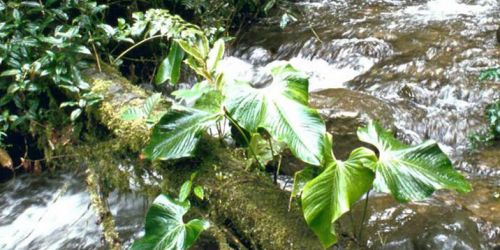The Importance of (Bio)diversity
The planet Earth is characterised by a wide diversity of living species, the biodiversity. Therefore, the Earth has an inestimable value, recognized by all human cultures around the world. Natural biodiversity has many implications and has to be protected. To understand the importance of diversity in our life let's use a metaphor: the forest.
Let's imagine that we paint all the elements in a forest (flowers, plants, soil….) the same colour, in this case green: it is now all the same colour. Now let's imagine that everything that is green becomes of a single material, i.e. plastic: it is now all of the same material. We can now imagine that everything that is plastic becomes shiny and that everything shiny has the same surface texture; we now have the same texture and reflection. Now let's imagine that the light is of one kind and evenly distributed: light is the same everywhere. Lastly, we can add constant background music: we now have an even and unchanging sound. In this way we have completely cancelled any diversity from the forest. This sameness in terms of colour, matter, surface, light and sound is negative because it creates a feeling of oppression and a lack of freedom. On the other hand, diversity corresponds to freedom of thought and expression: lack of differences would be an unfathomable loss for Man. In nature too, the reduction of the complexity and diversity of species is a negative factor. We are witnessing to an authentic tragedy, i.e. the progressive decrease in biodiversity is undermining the very delicate ecological balance of our planet in terms of its ability of cyclically transforming itself to renew its resources.
ECOLOGICAL VALUE OF BIODIVERSITY
It is worth mentioning here the ecological and cultural values of biodiversity, as revealed by the David Suzuki Organization. The following natural cycles make Earth hospitable by moderating temperatures and climate, and by providing us with food, clean water and breathable air.
Energy cycle: Photosynthesis is the process by which green plants convert sunlight, water, nutrients, and carbon dioxide into carbohydrates (which also releases oxygen into the atmosphere). Plants and photosynthetic bacteria transform energy from the sun into stored chemical energy, which is the foundation for virtually all food webs.
Water cycle: The refers to the circulation, transformation, and replenishment of fresh water from all of Earth's ecosystems. Forests, for example, moderate water flows by catching, holding and recycling rainwater. Plants release absorbed rainwater into the air through the loss of water through their leaves, called transpiration. In addition, wetlands and estuaries purify water and control flooding. Cattails, for example, catch and filter rainfalls and stream flows, remove toxins and gradually release water into creeks and rivers.
Nitrogen cycle: Nitrogen is needed by all organisms in order to live, and it makes up a large component of Earth's atmosphere. In its natural atmospheric form, nitrogen isn't directly accessible to most organisms, so it needs to be converted, primarily by bacteria which live on the roots of certain plants such as clover, alfalfa, peas and beans. These bacteria absorb nitrogen from the air and “fix” it into compounds like nitrate and ammonia — which helps plants grow. Creatures feeding on these plants release nitrogen in their waste products, which decompose and are then recycled into the atmosphere in their original form. Ecosystems provide numerous additional services to humans, animals and plants that we take for granted. For example, bacteria and soil organisms decompose waste products and create fertile soils in which crops can be grown. Pollinators such as bees ensure our food crops reproduce, while other animals such as bats, ladybugs and dragonflies control crop pests. The daily activities of a diverse range of creatures helps keep ecosystems functioning. In turn, these ecosystems support life. Healthy ecosystems are more stable and more adaptable to any change, such as extreme events like drought or floods which can alter entire ecosystems.
Carbon and oxygen cycles: Carbon dioxide in the atmosphere is generated by animal respiration, plant decay and the burning of fossil fuels. Carbon dioxide (CO2) is absorbed into the oceans through photosynthesis by tiny sea-dwelling organisms called phytoplankton. Trees and plants store CO2 as carbohydrates or complex sugars, and release oxygen back into the atmosphere, which provides us with a breathable atmosphere.
Through its no-profit Onlus association Bioforest, Valcucine aims to reduce the energy and raw materials' consumptions in production and to eliminate the use of toxic materials in order to respect the natural environment. In particular, Valcucine compensates the amount of CO2 generated by its production processes by replanting the quantity of trees necessary to absorb the toxic emissions.
LATEST POSTS










